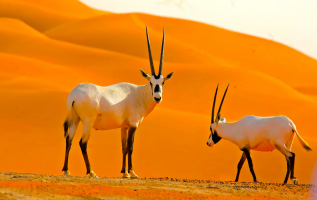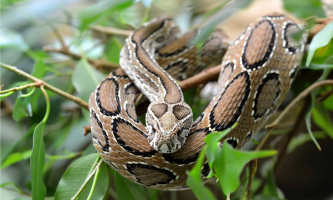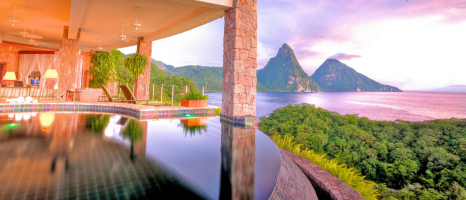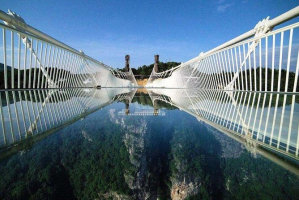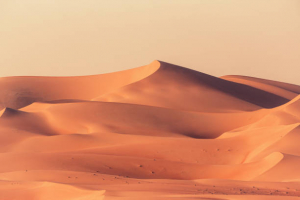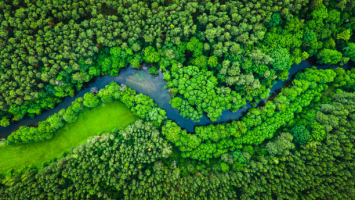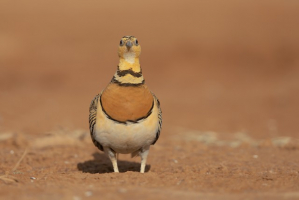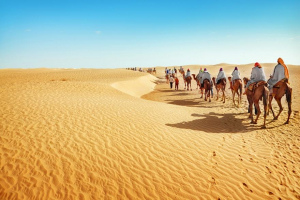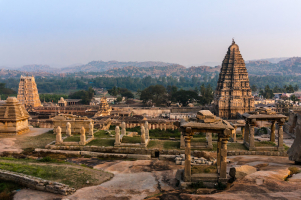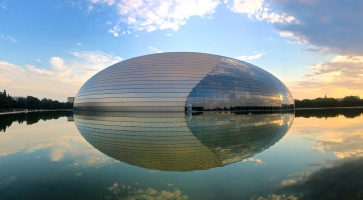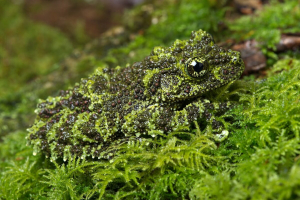Top 8 Amazing Reptiles Inhabiting The Sahara Desert
To most people, desert regions are thought of as lifeless locations where nothing flourishes. There is nothing farther from the truth than this. Deserts ... read more...usually have a diverse selection of life forms inhabiting them. In actuality, desert-dwelling animals are a wonderful example of how nature has evolved. The majority of animals living in Sahara desert regions have adapted to their surroundings in extremely obvious and distinctive ways. Here is a list of amazingly reptiles inhabiting the Sahara desert, let's find out!
-
Grey Monitor lizard is another name for the Desert Monitor Lizard. It has a lengthy mouth and many sharp, powerful teeth. Both people and other animals are at risk of death from its bite. One bite can leave the victim feeling lightheaded, with aching muscles, a rapid heartbeat, and trouble breathing. Its snout measures 560 to 579 mm in length. 865 mm to 870 mm is the length of its tail. Its upper body is colored differently, ranging from gray to a yellowish brown tint. Its body is crossed by brownish crossbars. The lizard ages and loses the vibrancy of this pattern.
Animals like desert monitor lizards are reclusive. Only in the early morning hours do they go out hunting. They rest and hide out in their burrow for the remainder of the day. Since they prefer warm environments, they cannot hibernate. Their diet consists of rodents, toads, frogs, eggs, birds, snakes, and other lizards. They are omnivorous creatures. They straighten their legs and lift their bodies in an arched position when they feel threatened. They puff out their necks and hiss and snarl. Their long mouths are extended, and their tails move side to side.
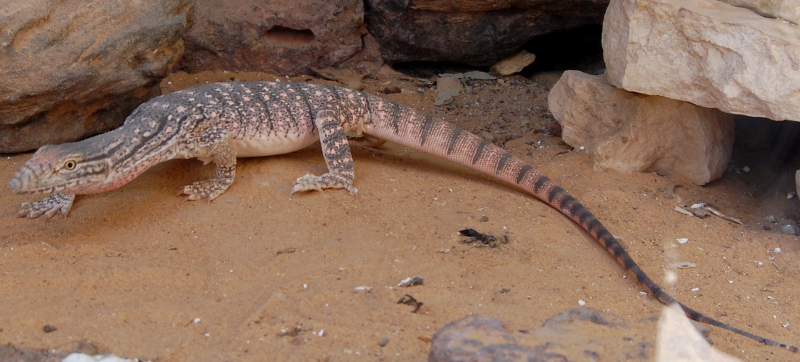
Wikipedia 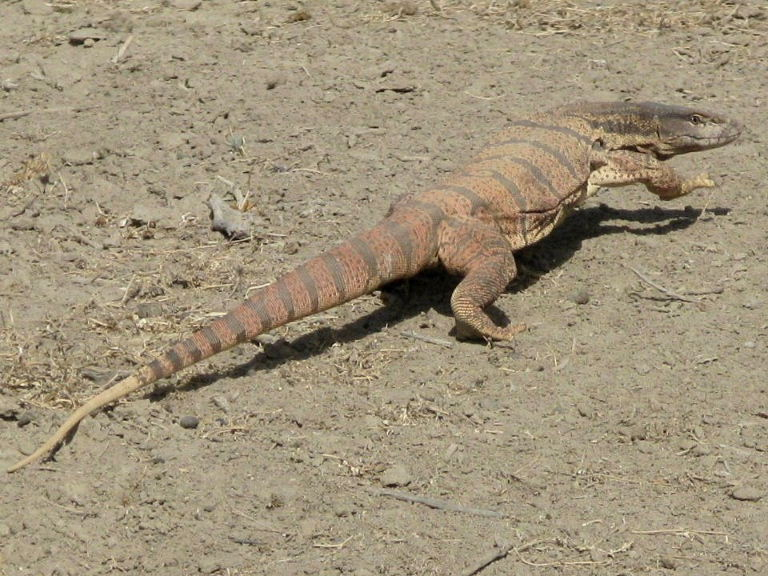
Animal Photos -
The Desert Horned Viper (Cerastes cerastes) or Saharan horned viper is a venomous species of viper native to the deserts of northern Africa and parts of the Arabian Peninsula and the Levant. The snake is common in Iraq but is also found in Syria, Saudi Arabia, Yemen, Jordan, Israel, and Kuwait. They can also be found in parts of North Africa including Libya, Egypt, and Sudan.
The highest overall length is 85 cm, with the average total length (body and tail) being 30-60 cm. males are generally smaller than females. The existence of supraorbital "horns", one above each eye, is one of this species' most recognizable features. However, these might be smaller or not present (see genus Cerastes). The eyes are large and positioned on the sides of the head. Males have larger heads and eyes than females, and there is a strong sexual dimorphism. They have typically ambushed predators in the wild, lying buried in the sand next to rocks or beneath vegetation. They attack quickly when approached, clinging onto their prey (small birds and rodents) until the poison takes effect.
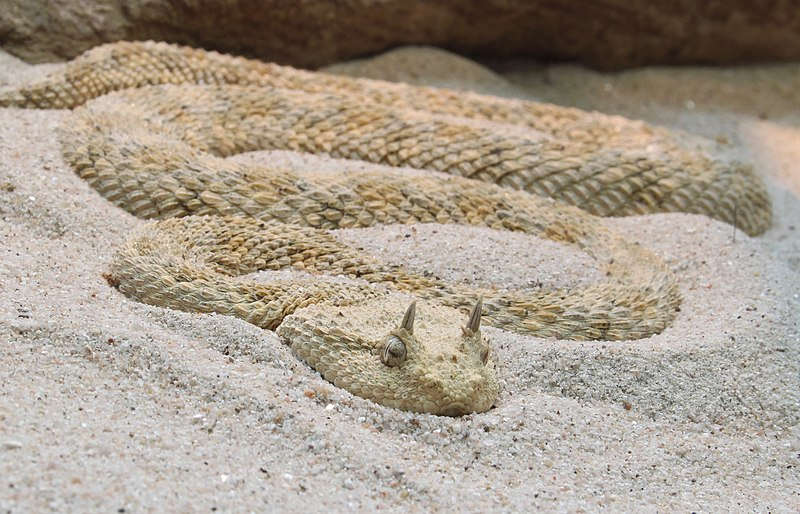
Wikipedia 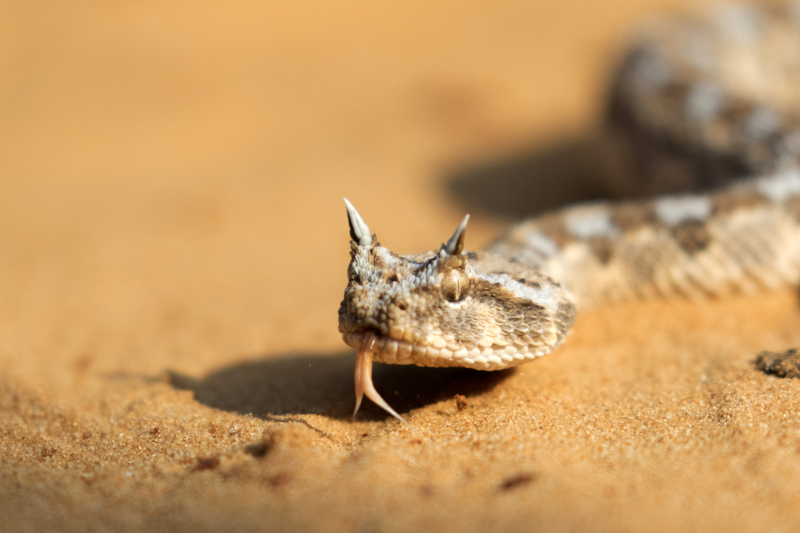
Wikimedia Commons -
The Namaqua Chameleon (Chamaeleo namaquensis) is a ground-living lizard found in the western desert regions of Namibia, South Africa, and southern Angola. In its natural habitat, it lives in arid and semiarid regions including the Karoo shrubland, sand deserts, and gravel plains. It even goes out to the intertidal zones to forage. It is a terrestrial creature that typically moves along the ground when walking, though young are frequently spotted climbing.
They are one of southern Africa's largest chameleon species, growing to a maximum length of 25 cm. Although males are relatively more robust, have larger heads and head ornamentation, and have a bulge under the base of the tail as a result of the existence of hemipenes, females are the larger sex. Due to its primary habitat being on land, its tail is much shorter than both its body and that of other arboreal chameleon species. It lacks the neck flap found in other Chamaeleo species but has prominent, pointed dorsal spines and a casque on the back of its head. This species of chameleon, like many others, has salt glands in its nose that excrete extra minerals like sodium chloride and potassium.
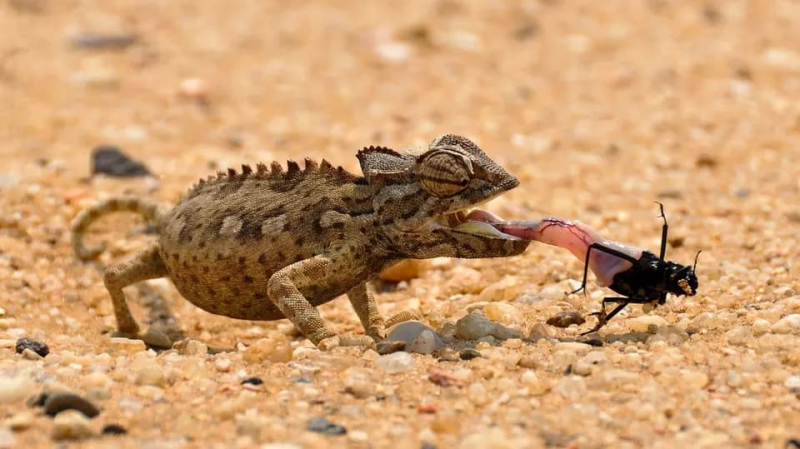
iStock 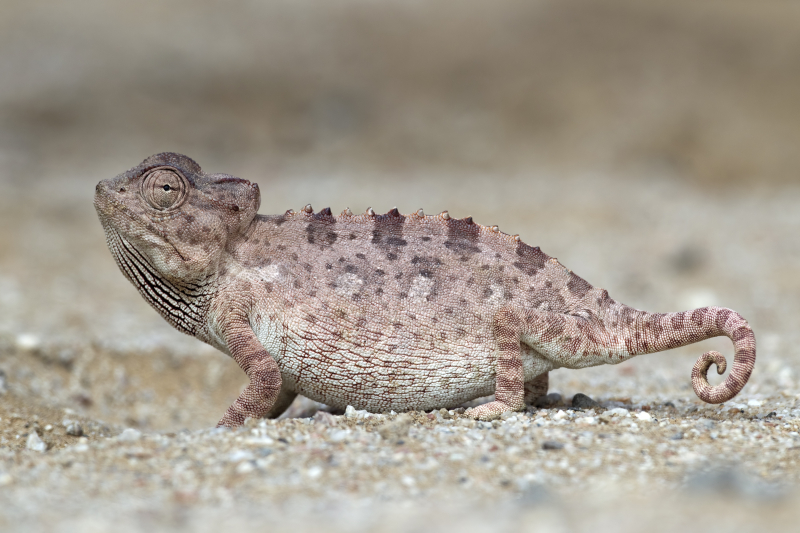
Wikipedia -
The West African crocodile is another name for Desert Crocodiles. In West and Central Africa, they are frequently found in the wetlands and lagoons of the woods. A typical Desert Crocodile measures 5 to 8 feet in length from the tip of the nose to the tip of the tail. The body length of an adult female can reach 10 to 13 feet. The male adult can reach a height of 20 feet. It weighs roughly 900 kilos or 2,000 pounds.
These crocodiles are devoted, watchful parents. They are constantly defending their nests from potential threats. Both parents will assist in the emergence of their offspring when the time comes. They will place the eggs inside their mouths and use their tongues to delicately crack each egg. Although it is less violent than the Nile crocodile, numerous assaults on people have been documented, some of which have been fatal. West African crocodiles are revered and guarded against harm by the native people of Mauritanian who reside nearby. This is because they hold the opinion that, just as water is necessary for crocodiles, so too are crocodiles to the water, which would vanish forever without them to occupy it. Crocodiles are not known to assault swimmers in this area, where they appear to coexist peacefully with people.
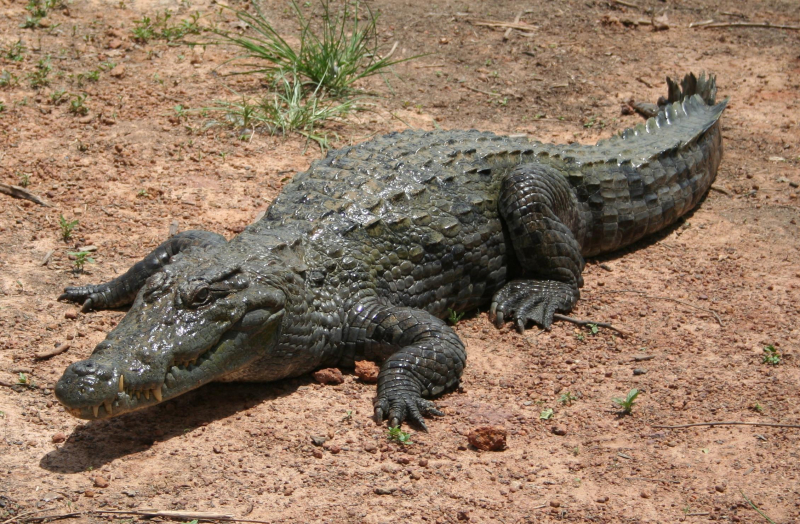
Wikipedia 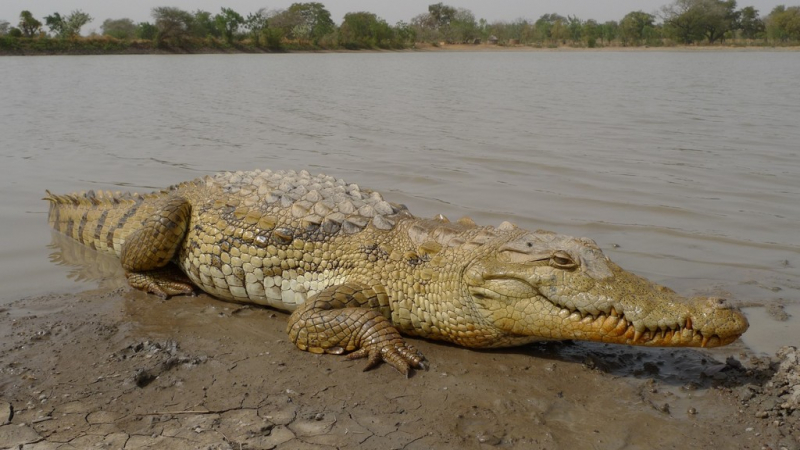
iNaturalist UK -
The Egyptian Cobra (Naja haje) is one of the most venomous snakes in North Africa, which has caused many snakebite incidents in humans. The majority of North Africa north of the Sahara, the savannas of West Africa south of the Sahara, the Congo basin south of the Sahara, and Kenya and Tanzania in the east are all within the range of the Egyptian cobra. It is a terrestrial and crepuscular or nocturnal species. It can, however, be seen basking in the sun at times in the early morning. This species shows a preference for a permanent home base in abandoned animal burrows, termite mounds, or rock outcrops.
The species of Egyptian cobra is substantial. Large, depressed, and barely distinguishable from the neck is the head. Like all other cobras, this species' neck includes lengthy cervical ribs that can spread out to form a hood. It has a somewhat large, rounded nose. The eye has a large, rounded pupil. The Egyptian cobra has a long tail and a cylindrical, robust body. The Egyptian cobra's length is greatly influenced by its subspecies, habitat, and population. The skull and hood of this species are the most distinctive features.
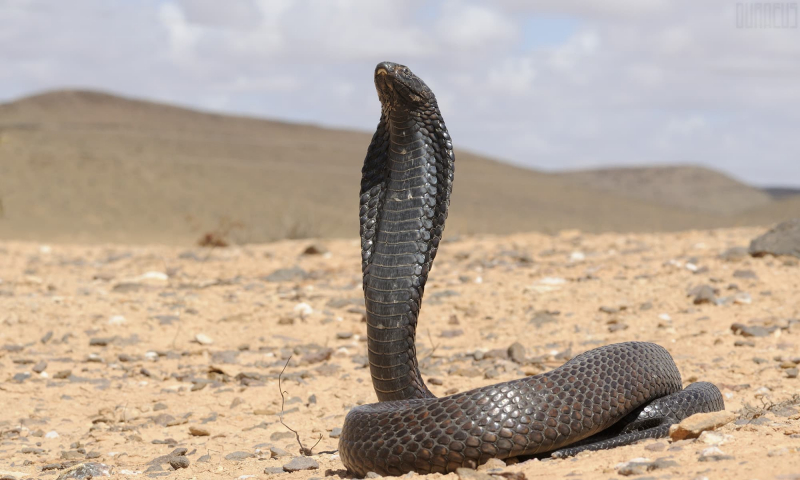
Wikipedia 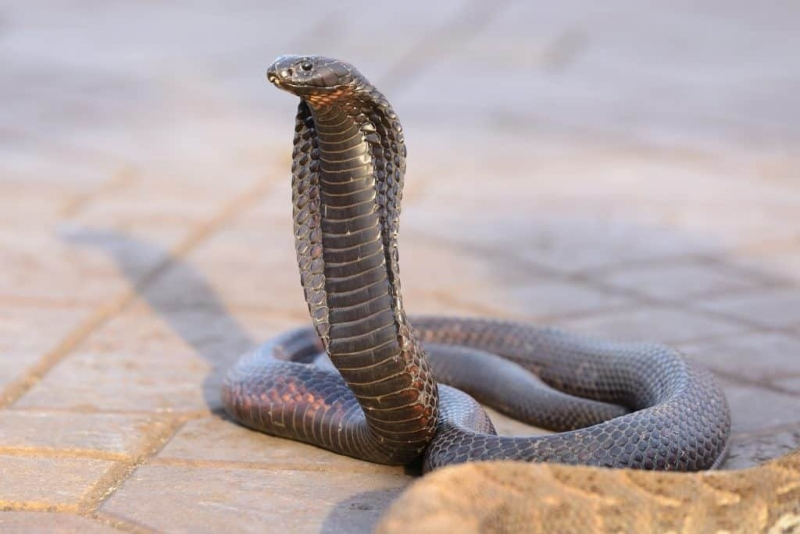
Animal Spot -
The Dwarf Crocodile (Osteolaemus tetraspis), also known as the African dwarf crocodile, broad-snouted crocodile (a name more often used for the Asian mugger crocodile) or bony crocodile, is an African crocodile that is also the smallest extant (living) species of crocodile. Tropical areas of Sub-Saharan West Africa and Central Africa are home to dwarf crocodiles. Such a range overlaps significantly with that of the slender-snouted crocodile, extending as far west as Senegal, as far east as Uganda, and as far south as Angola. The species, which is often ignored, was last seen in Uganda in the 1940s, but it is unknown if it still exists there (it was always marginal in this country, only occurring in the far southwest).
Although it is one of the most terrestrial crocodilian species and may spread the feeding pattern to land in extensive forays, especially after rains, foraging is primarily done in or near the water. As generalist predators, dwarf crocodiles have been observed consuming a variety of small species, including fish, crabs, frogs, insects, insects, lizards, aquatic birds, bats, and shrews.
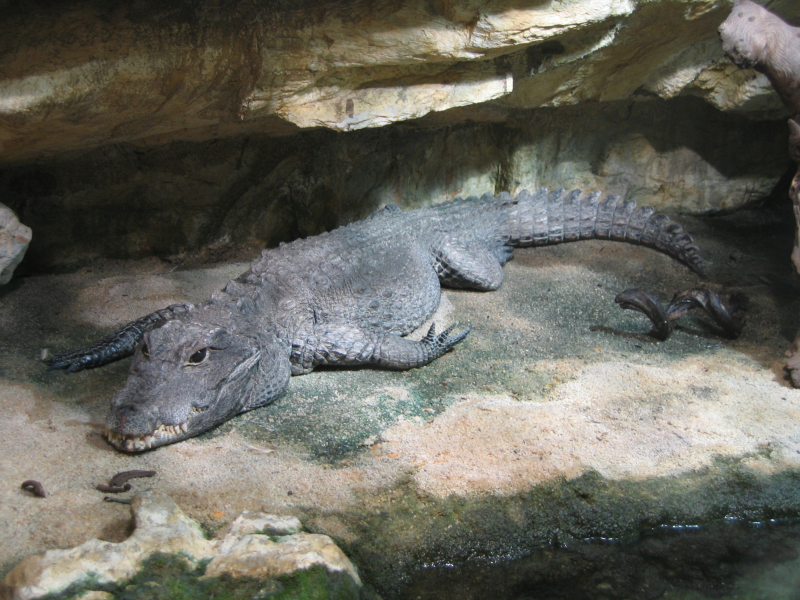
Wikipedia 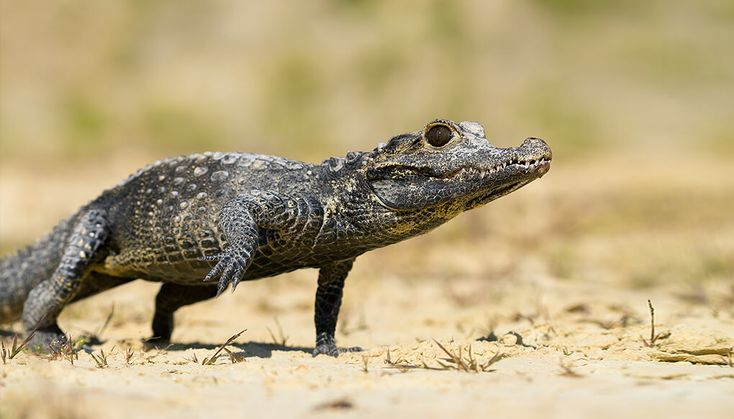
Pinterest -
The Sandfish Skink (Scincus Scincus) or common sandfish, common skink, is a species of skink notable for its burrowing or swimming behavior in the sand. It is native to the Sahara Desert and the Arabian Peninsula but is also kept as a pet elsewhere. The sandfish skink is an insectivore. It can detect vibrations that nearby insects create while moving, using those vibrations to locate, ambush, and consume them.
The Sandfish skink has evolved a strange, unexpected method of cooling off in the desert heat: diving into the loose, soft sand. Its winding motions cause the sand to vibrate at a constant frequency of 3 Hz. It does this to avoid overheating (since it has cold blood) and whenever it senses danger, particularly from its arch-enemy, the devil-headed Saharan snake. The lower jaw of this skink is countersunk and has a long, wedge-shaped snout that resembles a basket. Its legs are short and robust with long, flattened, and fringed feet that resemble shovels, and its compact, tapered body is covered in smooth, shiny scales that, to the untrained eye, may appear oily.
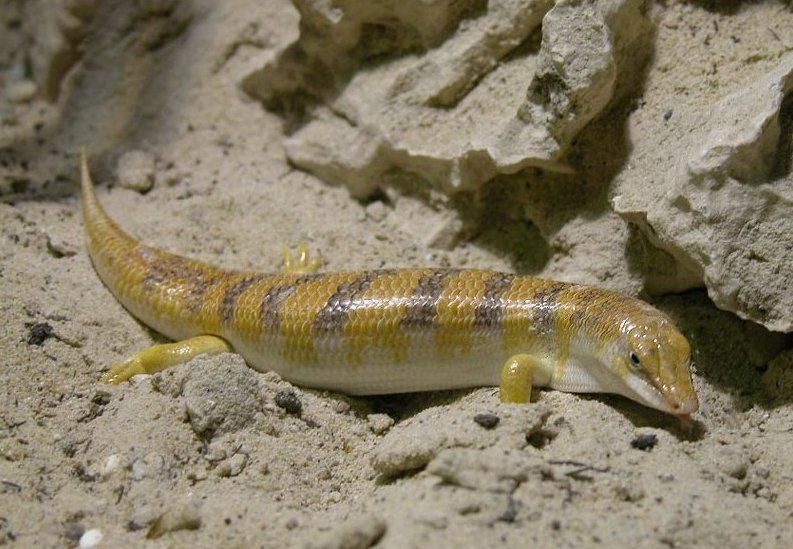
Wikipedia 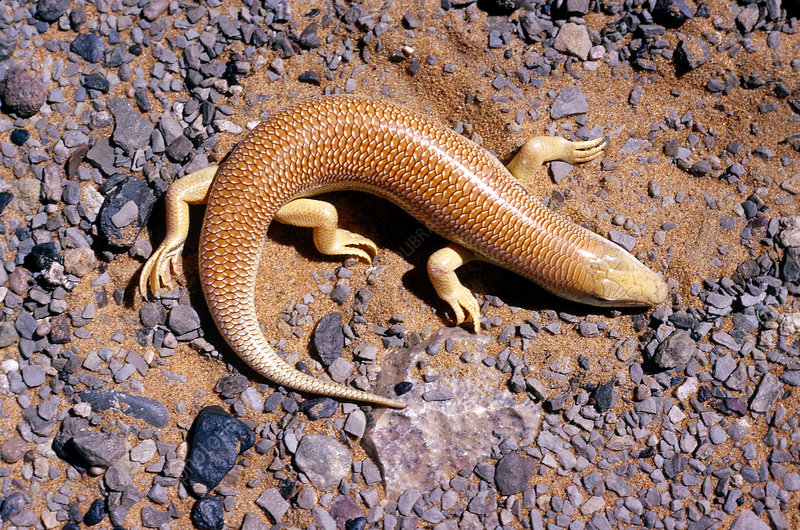
Science Photo Library -
The African Spurred Tortoise (Centrochelys sulcata), also called the sulcata tortoise, is a species of tortoise inhabiting the southern edge of the Sahara desert in Africa. Its specific name sulcata is from the Latin word sulcus meaning "furrow" and refers to the furrows on the tortoise's scales. C. sulcata is the third-largest species of tortoise in the world after the Galapagos tortoise, an Aldabra giant tortoise, and the largest of the mainland tortoises.
Herbivorous Sulcata tortoises exist. Their main food sources include various grasses, herbs, and hay. Their diet as a whole should be very low in protein and high in fiber. You can eat flowers, leaves, and even the pads of cacti. Apples and other fruits are a little bit beneficial for tortoises, but endive, dandelion greens, and romaine lettuce are healthier options. They can live more than 70 years.
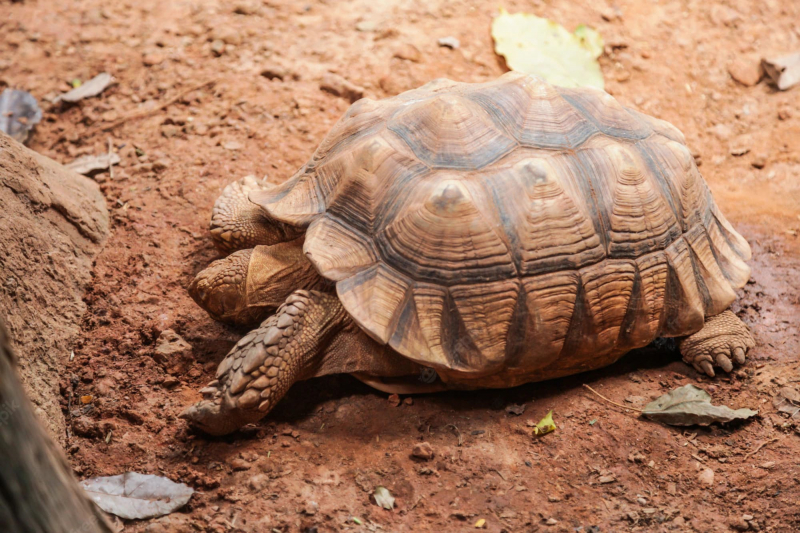
Freepik 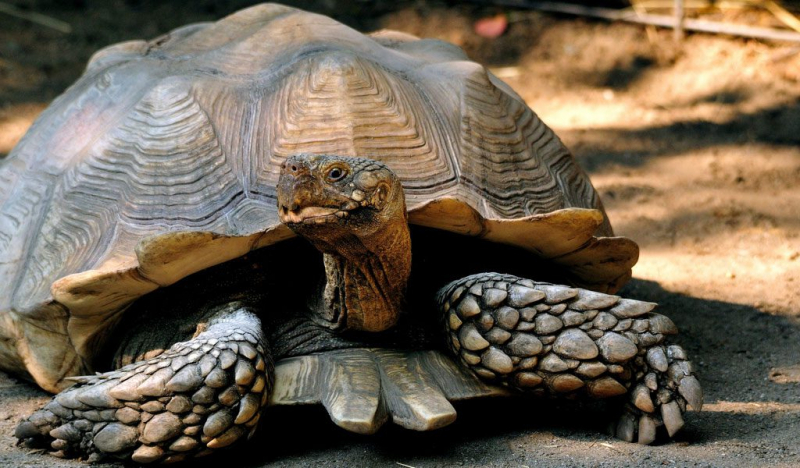
Animal Corner










